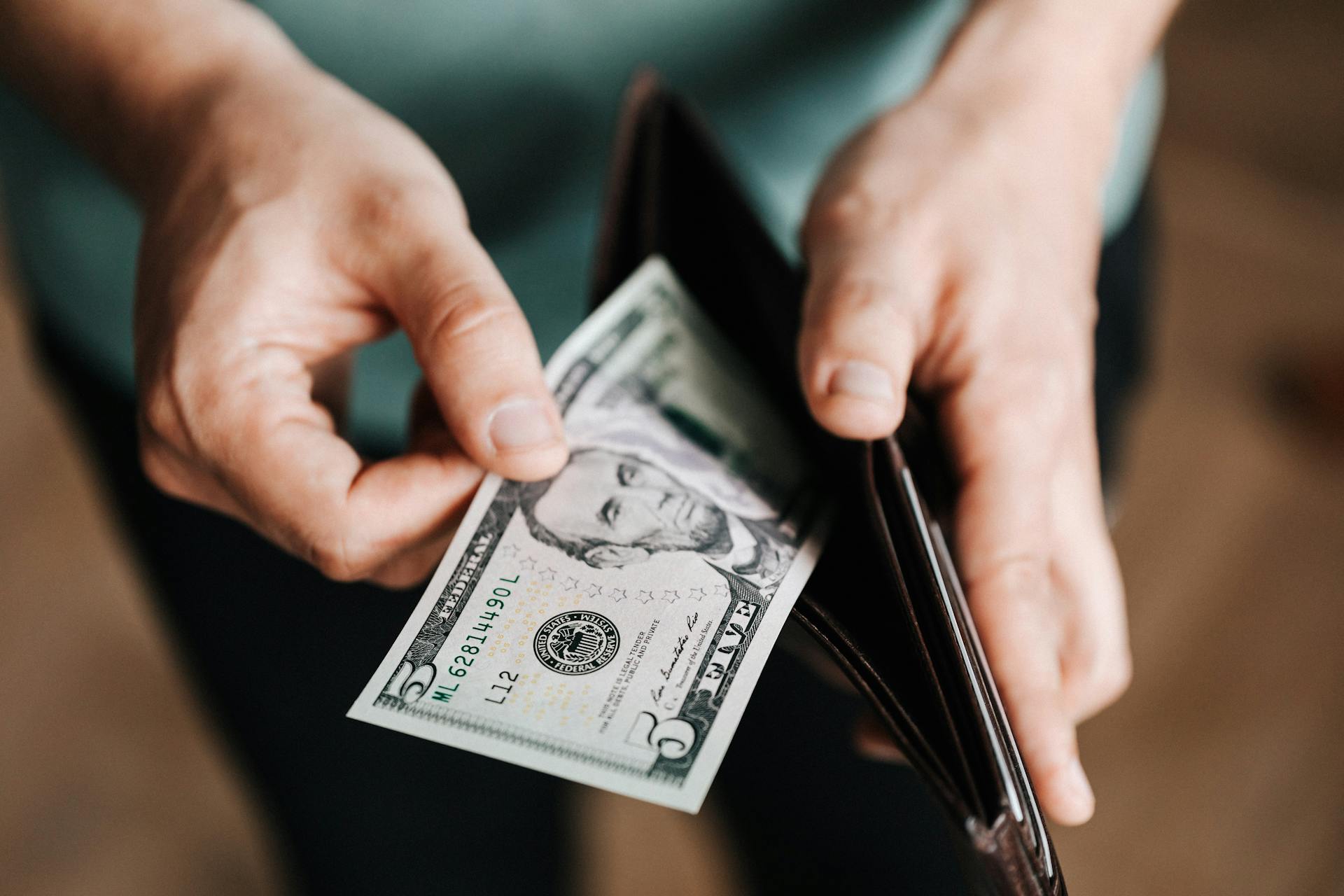
According to the latest statistics, approximately 27.5 million people in the US lacked health insurance in 2020. This number has been steadily decreasing since the Affordable Care Act (ACA) was implemented in 2010.
The majority of those without health insurance are low-income individuals and families, with 64% of those uninsured falling below 200% of the federal poverty level. The remaining 36% are either middle-class individuals or those who choose not to purchase insurance.
A significant number of people in the US are also underinsured, meaning they have coverage but it doesn't meet their needs. This can be due to high deductibles, copays, or coinsurance, leaving individuals with significant out-of-pocket expenses.
Key Statistics
Roughly 27 million Americans of all ages were without health insurance in Q1 2024.
Uninsured rates vary significantly by state, with Massachusetts having the lowest rate at under 3% and Texas having the highest at 16%.
Working-age adults are more likely to be uninsured than those under 18 or over 65.
Hispanic Americans are the least likely ethnic demographic to have health insurance, making up 26% of those who don't have coverage.
The most common obstacle to having health insurance is affordability.
Uninsured Rates
Young adults aged 19 to 25 had the highest uninsured rate in 2023, at 14%. This is likely due to the transition from CHIP coverage and the loss of health insurance when turning 26.
Many young adults face challenges in accessing public health insurance programs, whereas seniors aged 65 and older have Medicare coverage, resulting in an uninsured rate of just under 1%.
Young adults have three main options for health coverage: employer-sponsored plans, purchasing a plan through the Health Insurance Marketplace, or TRICARE for those eligible.
In 2023, the uninsured rate for males was 9% (14.7 million), while for females it was 7% (11.7 million). Men are more likely to be uninsured than women, partly due to higher Medicaid enrollment among women.
Hispanic Americans had the highest uninsured rate in 2024, at 26%, followed by people of other or multiple races, with 19% uninsured.
Uninsured Rates by State
Texas has the highest rate of uninsured at 16%, while Massachusetts has the lowest at under 3%. Other states with low uninsured rates include the District of Columbia, Hawaii, Vermont, and Minnesota.
The variation in uninsured rates across states can be partly attributed to differences in Medicaid expansion under the Affordable Care Act (ACA). States with expanded Medicaid, like Massachusetts and Hawaii, generally have lower uninsured rates.
Among the seven states that have not expanded Medicaid, four — Texas, Georgia, Oklahoma, and Wyoming — report higher than 10% uninsured rates. The exceptions are South Carolina (9%), Kansas (8%), and Wisconsin (5%).
Here's a list of states with low uninsured rates:
- District of Columbia
- Hawaii
- Vermont
- Minnesota
These states have made efforts to expand Medicaid, which has contributed to their lower uninsured rates.
14.4 Million Others
In 2019, 14.4 million people in the United States were uninsured.
This number is a significant portion of the US population, and it's essential to understand the reasons behind it. Many of these individuals are working but cannot afford health insurance due to high premiums or lack of access to affordable options.
The majority of the uninsured population is comprised of low-income individuals and families, who often struggle to make ends meet. In fact, 43% of the uninsured population has an income below 200% of the federal poverty level.
The uninsured rate varies significantly across different age groups, with young adults aged 19-25 being the most likely to be uninsured. In 2019, 22% of this age group lacked health insurance.
In contrast, children and older adults are less likely to be uninsured, with only 6% of children under 18 and 11% of adults aged 50-64 lacking health insurance in 2019.
Uninsured Rates by Age Group
Young adults aged 19 to 25 have the highest uninsured rate at 14% in 2023.
This is likely due to transitions in eligibility, such as the end of CHIP coverage at 19 and the loss of access to parents' health insurance when turning 26.
Seniors aged 65 and older have the lowest uninsured rate at just under 1%.
Working-age adults don't have the same access to public programs as seniors and young children.
Uninsured rates peak among young adults due to these eligibility transitions.
Here's a breakdown of the uninsured rates by age group in 2023:
These differences in access to public health insurance programs are a key factor in the varying uninsured rates among age groups.
Uninsured Rates by Gender
The uninsured rate varies significantly by gender. In 2023, the uninsured rate for males was 9%, which translates to 14.7 million people.
One reason men are more likely to be uninsured than women is due to higher enrollment of women in Medicaid. Women are more likely to qualify for Medicaid under categories such as pregnancy and being the parent of children under 18.
On average, women tend to have lower incomes than men, making them more eligible for Medicaid coverage.
Demographics of the Uninsured
In the first quarter of 2024, Hispanic Americans had the highest uninsured rates at 26%. White non-Hispanic individuals had the lowest rate at 8%, with Asian non-Hispanic individuals coming in at 5%.
Young adults, particularly those between 19 and 34 years old, make up more than a third of the uninsured population. Without immigrants and people in the Medicaid gap, the total number of uninsured is about 22 million people, with young adults making up a significant portion of that number.
About 1.5 million uninsured young adults were making less than $25,000 a year, giving that group an uninsured rate of 22.3 percent.
Uninsured Rates by Race/Ethnicity
Hispanic Americans had the highest uninsured rates at 26% in the first quarter of 2024.
The uninsured rate for Hispanic Americans remained the highest throughout 2023, peaking at 27% in the third quarter before dropping slightly to 25% by the end of the year.
People of other or multiple races had an uninsured rate of 19% in the first quarter of 2024, making them the second-highest group.
In comparison, white non-Hispanic individuals had an uninsured rate of 8%, and Asian non-Hispanic individuals had the lowest rate at 5% in the first quarter of 2024.
The uninsured rate for people of other or multiple races ranged between 15% and 17% throughout 2023.
Hispanic Americans had an uninsured rate of 42.4% in 2023, nearly three times that of non-Hispanic immigrants.
Who They Are
The 3.8 million people in the Medicaid gap are a very poor group overall, with nearly half living in families whose incomes are less than 50 percent of the poverty line.
They're mostly working-age adults without children, but about 800,000 parents with children living at home also fall into this gap.
At every income level, people in non-expansion states are more likely to be uninsured, including those earning six-figure salaries.
This is partly because of the crossover between non-expansion states and states with federally run health insurance exchanges, which had problems in their first year.
About 27 million people, or 8% of Americans, did not have health insurance as of the first quarter of 2024, according to the National Health Interview Survey (NHIS).
The number of uninsured Americans has fluctuated over the years, peaking at 47.2 million in 2010 and declining significantly after the introduction of the Affordable Care Act (ACA) in 2010.
By 2019, the number of uninsured Americans had risen to 28.9 million, with some linking this increase to policies enacted by the administration at the time.
Medicaid Gap
The Medicaid gap refers to the group of people who earn too much to qualify for Medicaid but too little to receive subsidies on the new health care exchanges.
Millions of people fall into this gap, with nearly 3.8 million individuals in the United States unable to get health insurance due to this loophole. This number is staggering, and it's a major contributor to the overall number of uninsured individuals.
People in the Medicaid gap tend to be very poor, with nearly half of them living in families with incomes less than 50% of the poverty line. This group is often overlooked, but they are in dire need of health insurance.
Here's a breakdown of the demographics of the Medicaid gap:
Even people earning six-figure salaries are more likely to be uninsured if they live in a state that didn't expand Medicaid. This is because these states often have federally run health insurance exchanges, which were notoriously problematic in their first year.
Health Insurance by Age and Income
Young adults, especially those between 19 and 25, have the highest uninsured rate at 14%. This is largely due to the transition out of public health insurance programs, such as CHIP, and the loss of coverage under their parents' insurance plans.
Many young adults face challenges in accessing affordable health insurance, with 1.5 million uninsured young adults making less than $25,000 a year, resulting in an uninsured rate of 22.3%. This highlights the difficulties low-income young adults face in affording health coverage.
Young adults who are not working have particularly high uninsured rates, but even those with jobs often work in jobs that don't offer coverage. This is likely due to the nature of many young adults' jobs, which can be unstable or lack benefits.
The uninsured rate among young adults varies significantly depending on income level. For those living in poverty, the uninsured rate is around 25%, while for those in higher-income families, the rate is much lower, around 4%.
Here's a breakdown of the uninsured rates among different income groups:
As you can see, the uninsured rate decreases significantly as income increases. This is likely due to the fact that higher-income individuals have more access to private insurance and other forms of health coverage.
Barriers to Health Coverage
The number of Americans without health insurance is a pressing concern. In 2024, around 27 million people were uninsured, a rate higher than in the first quarter of 2023, which was a record low.
The main reason Americans remain uninsured is affordability. According to the Kaiser Family Foundation, in 2022, 64% of uninsured nonelderly adults reported that high costs prevented them from obtaining health coverage.
A significant number of people work for employers who do not offer health insurance as part of their benefits package, making them ineligible for coverage. This can be a major barrier to health insurance for these individuals.
Some people believe they don't need health insurance, often because they're young and in good health. However, this can be a costly mistake, as medical expenses can add up quickly.
Enrolling in a health insurance plan can be confusing, especially for first-time buyers. The unfamiliar terms, such as copays and co-insurance, can be overwhelming and may discourage people from signing up.
The Affordable Care Act (ACA) expansion in 2014 made affordable health plans more accessible through the marketplace, but some people still struggle to find plans that match their specific health care needs.
Here are the main reasons why Americans may not have health coverage:
Impact of Lack of Insurance
The lack of health insurance in the US can have devastating consequences. According to the article, in 2019, 27.5 million people in the US lacked health insurance.
People without insurance are more likely to delay medical care, which can lead to further complications and even death. In fact, the article notes that uninsured individuals are 2.5 times more likely to die from cancer.
Uninsured individuals also face financial ruin due to medical expenses. The article states that in 2019, 34% of bankruptcies in the US were due to medical bills.
The consequences of lack of insurance are not limited to the individual, but also affect the community as a whole. The article notes that uninsured individuals are more likely to be hospitalized for preventable conditions, which increases the burden on the healthcare system.
In 2019, the US spent $73 billion on uncompensated care for the uninsured, a significant financial strain on hospitals and healthcare providers.
Medicaid and Health Insurance
Around 27 million people in the US had no form of health insurance as of March 2024, according to the Centers for Disease Control and Prevention.
The number of uninsured Americans rose to 8% of the population, higher than the 7.7% rate in 2023, which was a record low at the time.
This increase is largely due to states cutting Medicaid coverage, with over 25 million people losing their Medicaid coverage since states started re-evaluating eligibility in April 2023.
About 1 million working-age adults and 700,000 kids younger than 18 lost their Medicaid coverage.
The majority of people who lost Medicaid coverage found other forms of health insurance, such as buying plans on the state and federal marketplaces or switching to workplace health plans.
However, millions of people simply never found another form of health insurance, highlighting the need for more accessible and affordable options.
The Affordable Care Act (ACA) marketplaces have seen a surge in enrollment, with over 16.6 million people having an ACA health plan as of March 2024.
Many health insurance companies, including Centene and Molina Healthcare, are profiting from the growth of ACA enrollments.
Despite this, the federal government and states are working to increase automatic Medicaid renewals, although states are reporting large backlogs in these renewals.
The Medicaid gap, which affects around 3.8 million people, is a significant issue, as these individuals are ineligible for Medicaid due to their income but also cannot afford to buy private insurance on the exchanges.
Frequently Asked Questions
How many people in the US cannot afford healthcare?
Approximately 112 million American adults (44%) struggle to pay for healthcare, highlighting a significant affordability issue in the US healthcare system
What happens in America if you can't afford healthcare?
In the US, not having health insurance no longer incurs a tax penalty, but medical debt can still lead to bankruptcy. If you can't afford healthcare, you may face challenges accessing quality care due to doctors' rights to refuse patients without insurance or payment.
Sources
- https://www.moneygeek.com/insurance/health/americans-without-coverage/
- https://fivethirtyeight.com/features/33-million-americans-still-dont-have-health-insurance/
- https://www.census.gov/library/stories/2024/09/health-insurance-coverage.html
- https://pnhp.org/news/lack-of-insurance-to-blame-for-almost-45000-deaths-study/
- https://www.statnews.com/2024/08/06/medicaid-coverage-cuts-raise-uninsured-rate/
Featured Images: pexels.com


